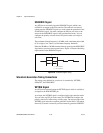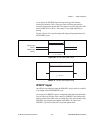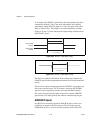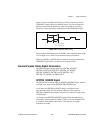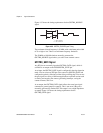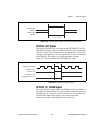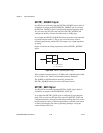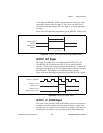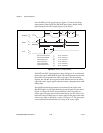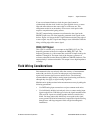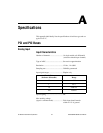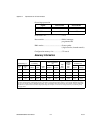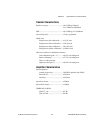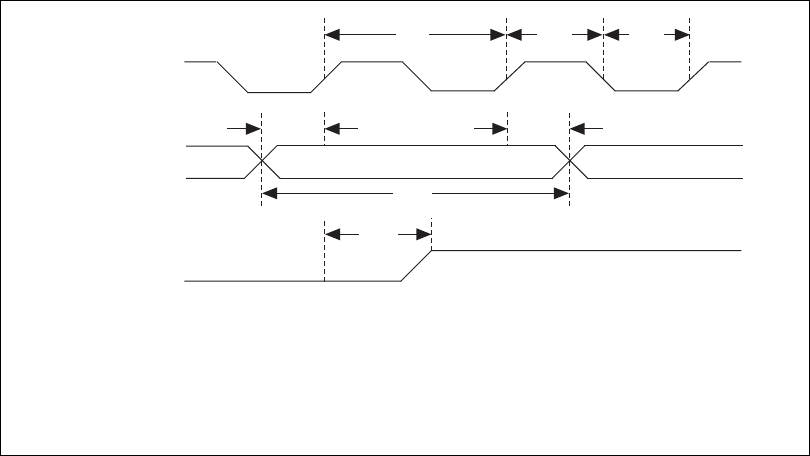
Chapter 4 Signal Connections
6023E/6024E/6025E User Manual 4-48 ni.com
leave the DIO7 pin free for general use. Figure 4-41 shows the timing
requirements for the GATE and SOURCE input signals and the timing
specifications for the OUT output signals of your device.
Figure 4-41. GPCTR Timing Summary
The GATE and OUT signal transitions shown in Figure 4-41 are referenced
to therising edge of theSOURCE signal. This timing diagram assumes that
the counters are programmed to count rising edges. The same timing
diagram, but with the source signal inverted and referenced to the falling
edge of the source signal, applies when the counter is programmed to count
falling edges.
The GATE input timing parameters are referenced to the signal at the
SOURCE input or to one of the internally generated signals on your device.
Figure 4-41 shows the GATE signal referenced to the rising edge of a
source signal. The gate must be valid (either high or low) for at least 10 ns
before the rising or falling edge of a source signal for the gate to take effect
at that source edge, as shown by t
gsu
and t
gh
in Figure 4-41. The gate signal
is not required to be held after the active edge of the source signal.
SOURCE
V
IH
V
IL
V
IH
V
IL
t
sc
t
sp
t
gsu
t
gh
t
gw
GATE
t
out
OUT
V
OH
V
OL
sc
t
t
t
t
t
t 50 ns minimum
sp
23 ns minimum
gsu
10 ns minimum
gh
0 ns minimum
gw
10 ns minimum
out
80 ns maximum
Source Clock Period
Source Pulse Width
Gate Setup Time
Gate Hold Time
Gate Pulse Width
Output Delay Time
t
sp



